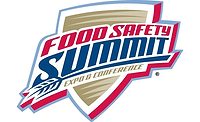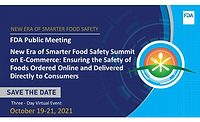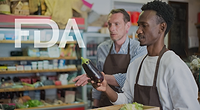Food Safety Summit: The FDA Food Code and its supplements

The 2017 FDA Food Code is a key component of a public health framework for maintaining a safe food supply and strengthening our nation's food protection system. Our nation’s food safety practices at more than a million restaurants, retail food stores, vending operations and food service operations play a critical role in preventing foodborne illness. The Food Code establishes practical, science-based guidance and enforceable provisions for controlling risk factors known to cause or contribute to foodborne illness outbreaks associated with these retail and foodservice establishments. Further, the Food Code represents the FDA's current thinking and best advice for a uniform system of regulation to ensure that retail food is safe, properly protected and presented, and has been widely adopted by state, local, tribal and territorial regulatory agencies that oversee the aforementioned establishments.
The benefits associated with complete and widespread adoption of the Food Code as statutes, codes and ordinances include, but are not limited to:
- promoting uniform national standards for retail food establishments;
- supplying a model set of regulations to improve efficiency;
- providing a consistent and standardized approach to retail food establishment inspections;
- offering effective controls to reduce the risks of foodborne illnesses within retail establishments.
The adoption of the FDA Food Code is also an important element of the FDA’s Voluntary National Retail Food Regulatory Program Standards, which provide a roadmap for continuous improvement for regulatory authorities that regulate U.S. retail food establishments.
The FDA Food Code and its Supplements[1] are created through a coordinated and collaborative process with the Conference for Food Protection that affords all stakeholders the opportunity to propose and deliberate improvements to the Food Code. The Supplements provide a means of incorporating into the Food Code several changes recommended by federal agencies and other stakeholders. The Supplements ensure that the current food safety provisions are available to agencies planning to initiate rule-making activities prior to the release of the next full edition of the Food Code. The Supplements also provide other users of the Food Code, such as educators and trainers, as well as the food service, retail, and vending industries, with up-to-date information on how to best mitigate risk factors that contribute to foodborne illness.
In the Supplement to the 2017 Food Code, several changes were made that included:
- revising definitions for the terms ‘intact meat’ and ‘mechanically tenderized’ to add clarity to its meaning and for consistency with USDA’s Food Safety and Inspection Service 2015 final rule;
- allowing certain food establishments that post minimal risk of causing or contributing to foodborne illness to operate without a person in charge; and
- removing chemically treated towelettes for handwashing because the means to wash hands with soap and water is readily available and effective.
The FDA works with its federal, state, local, territorial, and tribal agency partners to ensure enhanced coordination at all governmental levels and is committed to enhanced coordination with the food industry to protect our food supply. The FDA will continue to take progressive steps to partner with all who have a stake in food safety and are committed to reducing the incidence of foodborne illness in the U.S.
[1] From 1993 through 2001, the complete Food Code was issued every two years. With the support of the CFP, FDA currently issues a new Food Code every 4 years. The next complete revision of the Food Code will be published in 2021. A downloadable PDF of this full edition and its Supplement is on the FDA web page at www.fda.gov/foodcode.
About the author:
Glenda Lewis is on the Educational Advisory Board for the Food Safety Summit and will be leading a Learning Lounge discussion on the Food Code during the 2020 Food Safety Summit.
Click here for the 2020 Food Safety Summit schedule.
Looking for a reprint of this article?
From high-res PDFs to custom plaques, order your copy today!









